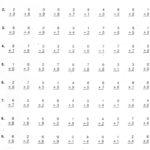See, my parents and my exposure was so normal as a child/adolescent. (Well, I saw a ton of cartoons as a teenager, and I’ve loved certain animation ever since) But that aside, my true geek side has really evolved with my husband. I had the inherent math geekiness (I frequently spout off on how cool Euclid’s fifth postulate is, and if you’d like to know, just ask *wink wink*), and the sci-fi/british humor came later.
I figure I can point to that fact that my mom pinned celery to my shirt and knitted the Tom Baker scarf and dragged me and my brother (and dad went more willingly) to a Doctor Who convention when I was seven is the reason for everything. lol. That was like, 1986. I keep hoping my Dad has photos somewhere. All I really remember of the convention was seeing some of the doctors from a distance (mom and dad didn’t want to wait in a long autograph line with small kids), and a mockup of the Tardis controls and a very very convincing K9 running around.
Course now my Mom says I like Doctor Who more then her, lol.
I got her into Sherlock though, I think that’s a fair trade.
So what’s this about Euclid?
Ooo! Euclid! I’m so glad you asked!
So, Euclid developed these guidelines and definitions for geometry, the first five of which read:
1. A straight line segment can be drawn joining any two points.
2. Any straight line segment can be extended indefinitely in a straight line.
3. Given any straight line segment, a circle can be drawn having the segment as radius and one endpoint as center.
4. All Right Angles are congruent.
5. If two lines are drawn which intersect a third in such a way that the sum of the inner angles on one side is less than two Right Angles, then the two lines inevitably must intersect each other on that side if extended far enough.
So you might be able to see that the first 4 are super simple. Almost obviously so (and if you’re not sure why, I can reword it to make it more clear). But that last one is quite complex.
So mathematicians for centuries tried to prove the 5th by using the first 4. What ended up happening was that they discovered that after 28 theorems (or proofs, like showing you can construct an equilateral triangle using a straight line by using a compass [a device for making circles, not the directional tool]), you either have to use the 5th guideline, or you don’t.
If you use the 5th guideline, then you continue into Euclidean geometry, which is what many of us learn in high school. But, if you don’t, one of two things can happen.
To understand why, know that that complicated 5th guideline is also equivalent to the parallel postulate, which says “Given a line and a point, there is one and only one line through the point that is parallel to the line.”
So if this isn’t true, then either there are:
NO lines through the point parallel to the original line, or
INFINITELY MANY lines through the point parallel to the original line.
The first, (no lines parallel), leads to spherical geometry, which can be thought of as the geometry of the Earth. Think about the lines of longitude on a sphere, those are lines on a sphere (lines of latitude are NOT geometric lines). If you pick a point, say the North Pole, then every line of longitude runs through that point, thus none are parallel):
The second, (infinitely many), leads to a special type of geometry that is speculated by some to be the geometry of the universe, called hyperbolic geometry. An example of this is called a Poincare sphere, which is a fascinating construct in which parallel lines look like:
And each geometry is completely valid and comes with its own entire rulebook.
It’s amazing.
It’s one of my favorite things of all time.
Wow


















